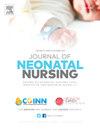减少新生儿重症监护室的医院获得性感染:护士主导的质量改进策略
Q2 Nursing
引用次数: 0
摘要
在新生儿重症监护病房(NICUs)中,感染控制对于保护高危新生儿免受卫生保健相关感染(HAIs)至关重要。本文综述了护士主导的质量改进方法和创新技术的使用,以减少和预防新生儿重症监护病房的感染。护士主导的倡议的要点包括继续教育、护理捆绑实施和点对点培训,所有这些都显示出降低感染率的显著效果,特别是对于中心静脉相关血流感染(CLABSIs)。创新技术,如抗菌表面、自动手部卫生监测和电子监测系统,在提高依从性和降低感染率方面已显示出有益的结果。尽管取得了这些新进展,但在实施感染控制方面仍面临许多挑战,包括资源有限,如工作人员、个人防护装备短缺,以及缺乏适当的基础设施,特别是在资源有限的环境中。新生儿重症监护病房感染的有效预防取决于护士主导的举措和创新技术方法的结合。本文章由计算机程序翻译,如有差异,请以英文原文为准。
Reducing hospital-acquired infections in the NICU: Nurse-led quality improvement strategies
Infection control is crucial in neonatal intensive care units (NICUs) to protect high-risk neonates from healthcare-associated infections (HAIs). This review scrutinizes nurse-led quality improvement approaches and use of innovative technologies to decrease and prevent infection in NICUs. Essentials of nurse-led initiatives include continuous education, care bundle implementation, and peer-to-peer training, all of which have shown significant effectiveness in reduction of infection rates, especially for central line-associated bloodstream infections(CLABSIs). Innovative technologies, such as antimicrobial surfaces, automated hand hygiene monitoring and electronic monitoring systems have demonstrated beneficial results in improving adherence and lowering infection rates. Despite these new advancements, there are numerous challenges faced in implementing infection control, include limited resources, such as shortage in staff, personal protective equipment, and a lack of proper infrastructure, particularly in resource-limited settings. Effective prevention of infection in NICUs depends on a combination of nurse-led initiatives and innovative technological approaches.
求助全文
通过发布文献求助,成功后即可免费获取论文全文。
去求助
来源期刊

Journal of Neonatal Nursing
Nursing-Pediatrics
CiteScore
2.00
自引率
0.00%
发文量
143
期刊介绍:
Aims & Scope: This is the practical, bimonthly, research-based journal for all professionals concerned with the care of neonates and their families, both in hospital and the community. It aims to support the development of the essential practice, management, education and health promotion skills required by these professionals. The JNN will provide a forum for the exchange of ideas and information between the range of professionals working in this field; promote cooperation between these professionals; facilitate partnership care with families; provide information and informed opinion; promote innovation and change in the care of neonates and their families; and provide an education resource for this important rapidly developing field.
 求助内容:
求助内容: 应助结果提醒方式:
应助结果提醒方式:


